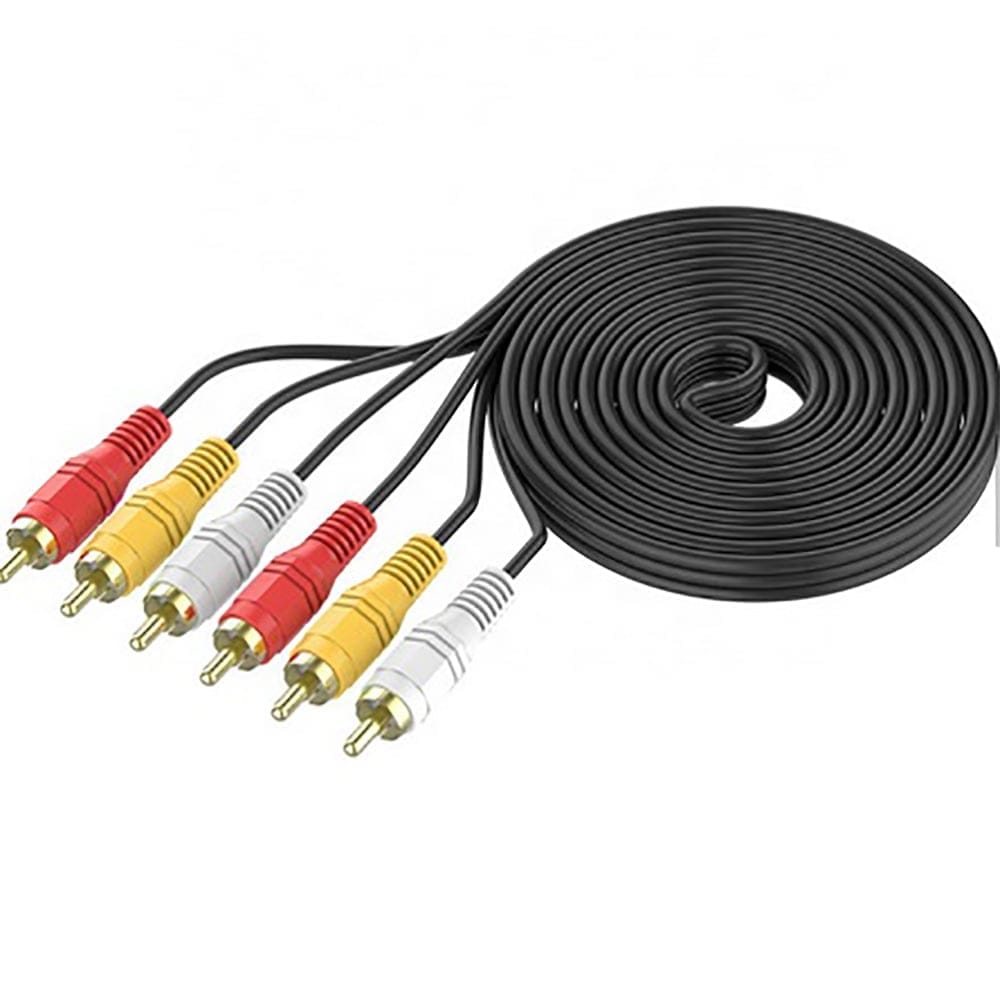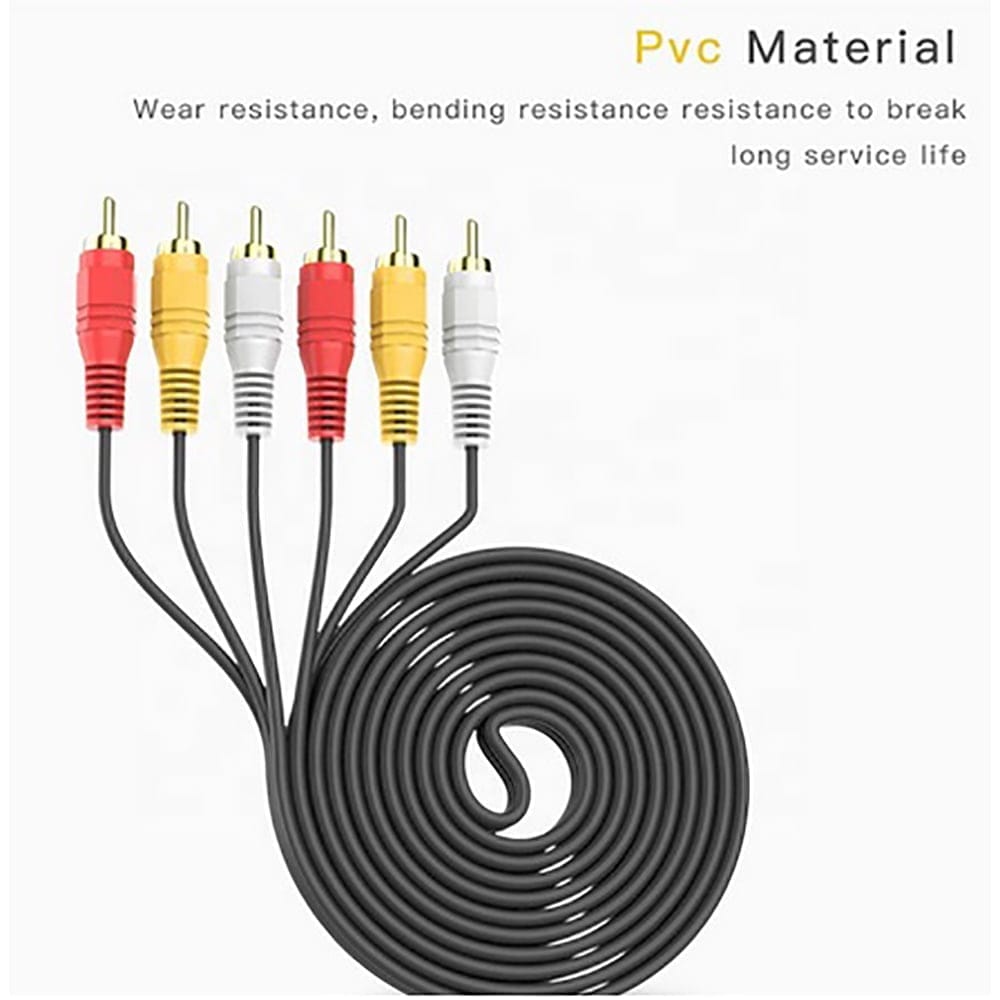Introduction
RCA cables, named after the Radio Corporation of America, have been a staple in audio and video connectivity for decades. These cables widely use for transmitting analog signals and have found applications in various consumer electronics, including televisions, audio equipment, and gaming consoles. Despite the advent of digital connectors like HDMI and USB-C, RCA cables remain relevant due to their simplicity, reliability, and cost-effectiveness. This paper aims to explore the different types of RCA cables, ranging from basic to high-end options, and provide insights into their construction, performance, and suitability for various applications.
Historical Background
The RCA cable was introduced in the 1940s by the Radio Corporation of America for internal use in radio-phonograph consoles. Over time, it became a standard connector for consumer electronics due to its ease of use and effectiveness in transmitting audio and video signals. Initially, RCA cables were primarily used for mono audio connections, but they evolved to support stereo audio and composite video signals. Technological advancements have led to the development of higher-quality RCA cables with improved materials and construction techniques, catering to the needs of audiophiles and professionals.
Basic RCA Cables
Basic RCA cables are characterized by their simple construction and affordability. They typically consist of a central conductor made of copper or aluminum, surrounded by an insulating layer and an outer shielding to reduce electromagnetic interference. The connectors are usually made of nickel-plated brass and are color-coded for easy identification (red for right audio, white for left audio, and yellow for video).
Applications and Performance:
Basic RCA cables are suitable for everyday consumer electronics, such as connecting DVD players to televisions or stereo systems. They offer adequate performance for standard-definition video and stereo audio but may not provide the best signal quality for high-fidelity audio or high-definition video.
Mid-Range RCA Cables
Mid-range RCA cables offer improved performance compared to basic models, thanks to better materials and construction techniques. These cables often use higher-grade copper for the central conductor and multiple layers of shielding to minimize signal loss and interference. The connectors usually gold-plated to enhance conductivity and reduce corrosion.
Applications and Performance:
Mid-range RCA cables are ideal for users seeking better audio and video quality without breaking the bank. They are suitable for connecting high-definition televisions, home theater systems, and mid-range audio equipment. The enhanced construction results in clearer audio and sharper video signals, making them a popular choice for enthusiasts.
High-End RCA Cables
High-end RCA cables designed for audiophiles and professionals who demand the highest signal quality. These cables use premium materials and advanced engineering techniques to deliver exceptional performance. The central conductor is often made of oxygen-free copper (OFC) or silver, and the insulation and shielding optimized to reduce signal degradation.
Applications and Performance:
High-end RCA cables used in high-fidelity audio systems, professional recording studios, and high-end home theater setups. They offer superior signal clarity, reduced noise, and minimal signal loss, ensuring the best possible audio and video quality. These cables are often more expensive but provide significant benefits for critical listening and viewing environments.
Comparative Analysis
Materials and Construction
| Performance | Basic RCA Cables | Mid-Range RCA Cables | High-End RCA Cables |
| Central conductor | Copper or aluminum | High-purity copper | Oxygen-free copper (OFC) or silver |
| Insulation | Polyethylene or PVC | Foam polyethylene or Teflon | Teflon or other high-performance polymers |
| Shielding | Single layer of braided or foil shield | Multiple layers of braided and foil shields | Quad-layer braided and foil shields |
| Connectors | Nickel-plated brass | Gold-plated brass or copper | Rhodium or platinum-plated brass or copper |
Performance Comparison:
- Basic RCA Cables:Suitable for standard-definition video and stereo audio. Adequate for everyday use but may suffer from signal degradation over longer distances.
- Mid-Range RCA Cables:Improved signal quality with better shielding and materials. Suitable for high-definition video and enhanced audio performance.
- High-End RCA Cables:Exceptional signal clarity and minimal loss. Ideal for audiophiles and professional applications where the highest quality is paramount.
Cost-Benefit Analysis:
While high-end RCA cables offer the best performance, they come at a premium price. Mid-range cables provide a good balance between cost and performance, making them a popular choice for most users. Basic cables are the most affordable but may not meet the needs of users seeking high-quality audio and video.
Suitability for Different User Needs:
- Casual Users:Basic RCA cables are sufficient for standard consumer electronics.
- Enthusiasts:Mid-range cables offer enhanced performance without a significant cost increase.
- Audiophiles/Professionals:High-end cables provide the best signal quality for critical applications.
Technological Innovations and Future Trends
Recent advancements in RCA cable technology focus on improving materials and construction techniques to further enhance signal quality. Innovations include the use of cryogenically treated conductors, advanced dielectric materials, and more effective shielding designs. As digital connectors continue to evolve, RCA cables also being adapted to meet the needs of modern audio and video equipment.
Emerging Trends:
- Hybrid Cables:Combining RCA connectors with digital interfaces to offer greater versatility.
- Eco-Friendly Materials:Using sustainable materials and manufacturing processes to reduce environmental impact.
- Customization:Offering customizable lengths and connector options to cater to specific user requirements.
Conclusion
RCA cables continue to play a vital role in audio and video connectivity, with options ranging from basic to high-end models. Understanding the differences in construction, materials, and performance can help users make informed decisions based on their needs and budget. While high-end cables offer the best performance, mid-range options provide a good balance for most users, and basic cables remain a cost-effective solution for everyday applications. As technology advances, RCA cables will continue to evolve, offering improved performance and versatility for a wide range of applications.









